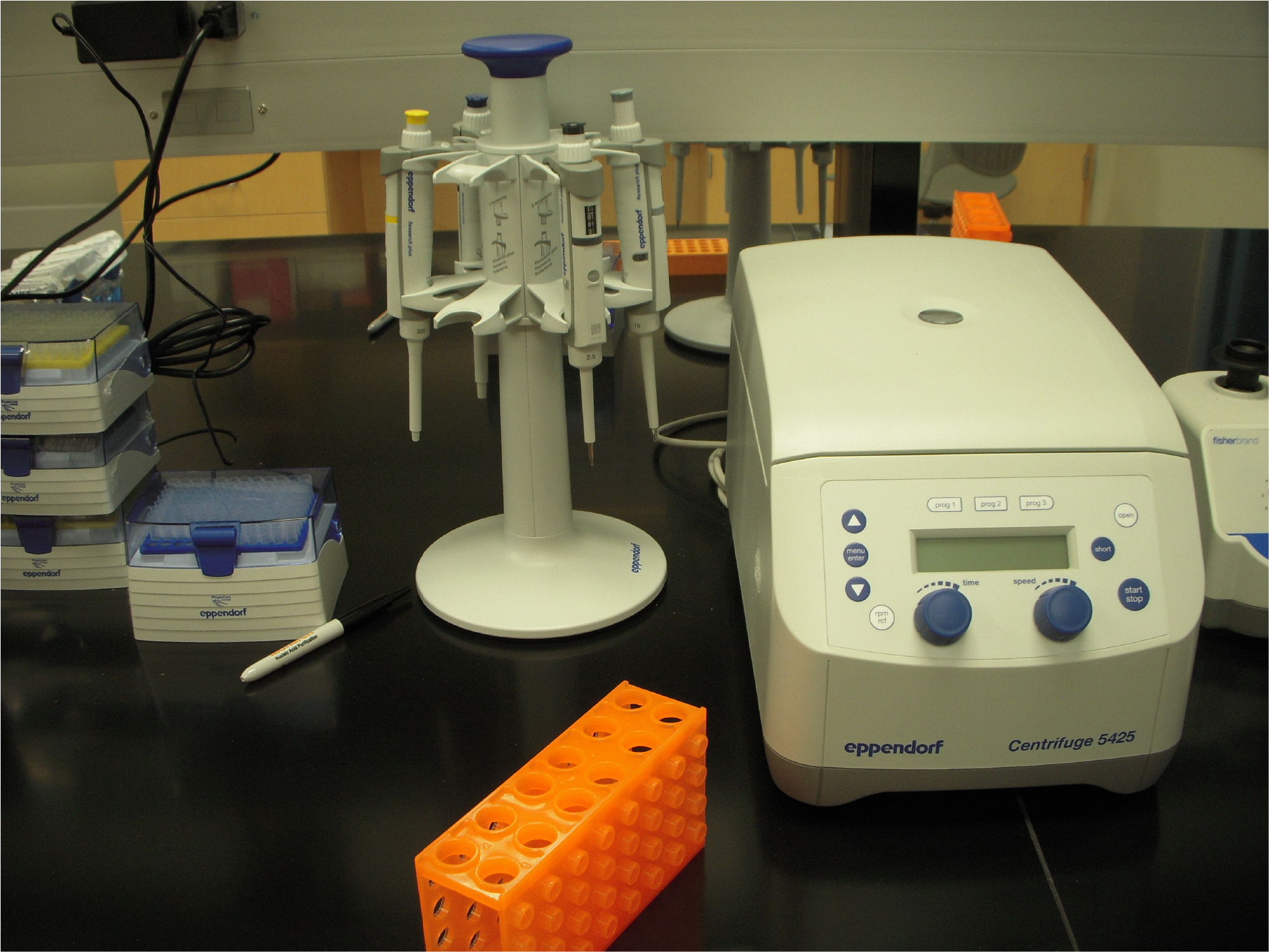RNA post-transcriptional regulation is important in all biological systems and diseases. RNA structure is an inherent property of RNA molecules that influences their regulation and function. We research these fundamental biological principles in a variety of different systems. First, we are researching the underlying role of RNA structure in protein recognition and network regulation. Second, we are pursuing methods to improve identification of RNA regulatory elements. We employ expertise in wet lab experiments including experimentally derived RNA structure and molecular analysis of regulatory co-factors. We combine this with bioinformatic analyses and computational RNA structure modeling.
The mechanistics of regulation
A low estimate for the number of RNA binding protein is around 1,500 proteins. Recent work by the ENCODE, and now ENCORE projects, have illustrated the vastly different properties and functions of these RNA binding proteins. One feature of RNA binding proteins is their preference for specific RNA structures. Together, RNA structure and sequence motifs control which proteins and small RNAs they interact with. RNA:protein complexes determine the fate and function of an RNA.
Splicing and regulatory elements
Messenger RNAs (mRNAs) transmit genetic information into protein, but this function is extensively regulated. For example, alternative splicing takes one gene sequence and creates an exponentially greater set of multi-functional RNA and protein isoforms. More than 95% of multi-exonic genes are alternatively spliced!
Splicing is not an esoteric reaction with little relevance to the real world. Defects in splicing are thought to underlie more than 15% of human diseases and contribute the severity and progression of many more. Fundamental research on RNA splicing will provide insight into the mechanisms of human disease and offer potential strategies for future therapeutics.
Splice reactions are performed by the spliceosome, an RNA protein complex that is assembled onto precursor mRNA in stages. The final activity of the spliceosome is influenced by a combination of spliceosome factors and elements embedded within the precursor mRNA. Factors involved in mRNA element function, like sequence motifs and RNA structure folds, are not fully understood, and a majority of such elements remain unidentified. Annotating regulatory elements and linking them with protein co-factors remains a central challenge in understanding splicing regulation.
Goals
We are developing better predictive systems to identify splicing regulatory elements. By mapping regulatory elements onto genes we can quickly identify variants or mutations that are likely to alter splicing and contribute to disease.
We are identifying fundamental molecular mechanisms that guide recognition of spliceosome binding sites. RNA forms extensive structures that influence protein binding. We are using cutting-edge technology to experimentally solve RNA secondary structures and identify structural motifs.
We are annotating splicing regulatory elements in disease-associated genes to probe the variability in splicing regulation across individuals, tissues and environmental conditions. One difficulty in predicting splice regulatory elements is in understanding which elements are specific to a unique conditions. Studying individual genes helps define the validity of broadly applying splice elements in all conditions.
Selected Publications
1. Herbert A, Hatfield A, Lackey L. How does precursor RNA structure influence RNA processing and gene expression? Biosci Rep. 2023 Mar 31;43(3):BSR20220149. doi: 10.1042/BSR20220149. PMID: 36689327; PMCID: PMC9977717.
This work is a review of the role of RNA structure in precursor RNA. We discuss how RNA structure can influence protein interactions leading to changes in RNA processing that control the form and fate of a processed mature transcript. We also discuss ways to identify functional structural elements within precusor RNAs.
2. Kumar J, Lackey L, Waldern JM, Dey A, Mustoe AM, Weeks K, Mathews DH, Laederach A. Quantitative prediction of variant effects on alternative splicing in MAPT using endogenous pre-messenger RNA structure probing. Elife. 2022 Jun 13;11. [Epub ahead of print] PubMed PMID: 35695373.
This work investigates the role of RNA structure in controlling splicing at the MAPT locus. MAPT RNA codes for the TAU protein, involved in neural biology. MAPT RNA is alternatively spliced, including exon skipping to produced a 3R or 4R isoform. A hairpin at the 5′ splice site influences the balance of 3R to 4R isoforms.
3. Lackey L*, Coria A, Ghosh AJ, Grayeski P, Hatfield A, Shankar V, Platig J, Xu Z, Ramos SBV, Silverman EK, Ortega VE, Cho MH, Hersh CP, Hobbs BD, Castaldi P, Laederach A*. Alternative poly-adenylation modulates α1-antitrypsin expression in chronic obstructive pulmonary disease. PLoS Genet. 2021 Nov;17(11):e1009912. PubMed PMID: 34784346; PubMed Central PMCID: PMC8631626. (*corresponding author)
This work describes SERPINA1 regulation from alternative polyadenylation of the 3’UTR of the RNA. SERPINA1 codes for Alpha1 Anti-Trypsin protein (A1AT), which is involved in lung and liver biology. Poor expression of A1AT is associated with development of COPD (emphysema).
4. Lackey L, Coria A, Woods C, McArthur E, Laederach A. Allele-specific SHAPE-MaP assessment of the effects of somatic variation and protein binding on mRNA structure. RNA. 2018 Apr;24(4):513-528. PMID: 29317542; PMCID: PMC5855952.
This work details a novel method to determine the structure of two RNAs that differ by only one nucleotide to understand the prevalence of structure changing single nucleotide variants (termed riboSNitches) and their potential impact as synonymous or non-coding somatic mutations.
5. Woods CT, Lackey L, Williams B, Dokholyan NV, Gotz D, Laederach A. Comparative Visualization of the RNA Suboptimal Conformational Ensemble In Vivo. Biophys J. 2017 Jul 25;113(2):290-301. PMID: 28625696; PMCID: PMC5529173.
This work develops a new method for analyzing RNA structure. RNA molecules are very flexible and populations of RNA molecules are often composed of multiple structures. Different environments or mutations within an RNA can shift the ensemble of structures and perturb the overall biology of the RNA.
